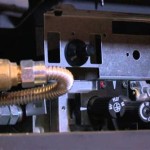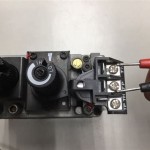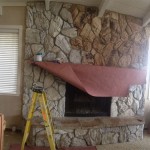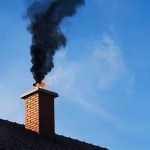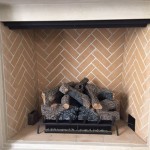Understanding Fireplace Door Seal Glue: A Comprehensive Guide
Maintaining an efficient and safe fireplace requires attention to detail, and one often overlooked component is the fireplace door seal. The integrity of this seal directly impacts the fireplace's performance, affecting heat retention, air control, and overall safety. A crucial element in ensuring a proper seal is the type of glue used to adhere the gasket material to the fireplace door. This article will explore the various aspects of fireplace door seal glue, providing essential information for homeowners and professionals alike.
The fireplace door seal serves multiple important functions. Primarily, it prevents air leakage around the door, which can compromise the efficiency of the fireplace. Air leaks can draw cold air into the room, increasing heating costs and creating uncomfortable drafts. Furthermore, a poor seal can lead to uncontrolled burning, making it difficult to regulate the fire's intensity and potentially increasing the risk of chimney fires. The gasket also helps to contain smoke and fumes within the firebox, preventing them from escaping into the living space. A compromised seal can result in unpleasant odors and, more seriously, the release of harmful carbon monoxide into the home. Choosing the right glue for the fireplace door seal is, therefore, a critical step in maintaining fireplace functionality and safety.
Key Point 1: Types of Fireplace Door Seal Glue
Several types of adhesives are commonly used for securing fireplace door seals, each with its own set of characteristics and advantages. The selection of the appropriate glue depends on factors such as the type of gasket material used, the operating temperatures of the fireplace, and the desired longevity of the seal.
One of the most common types of glue used is high-temperature silicone adhesive. Silicone adhesives are known for their excellent heat resistance, flexibility, and bonding strength. They can withstand temperatures up to 500°F (260°C) or even higher in some cases, making them suitable for the demanding environment of a fireplace. Additionally, silicone adhesives remain flexible even after curing, allowing the gasket to compress and expand with temperature fluctuations without cracking or losing its seal. High-temperature silicone adhesives are typically available in tubes and are applied using a caulking gun for precise application.
Another option is ceramic fiber adhesive, specifically formulated for bonding ceramic fiber gaskets to fireplace doors. These adhesives are designed to withstand extremely high temperatures, often exceeding 2000°F (1093°C). Ceramic fiber adhesives create a strong, permanent bond, making them ideal for applications where long-term durability is essential. They are particularly well-suited for attaching dense ceramic fiber gaskets, which are often used in high-heat fireplaces and stoves. Application methods may vary depending on the specific product, but they often involve applying a thin, even layer of adhesive to both the gasket and the door frame.
Refractory mortar can also be used as an adhesive, although it is more commonly used for repairing firebricks and mortar joints within the firebox. Refractory mortar is a cement-like material that is specifically formulated to withstand high temperatures without degrading. When used as an adhesive for fireplace door seals, it provides a very strong and durable bond. However, it is less flexible than silicone adhesive and may be more prone to cracking if the fireplace door experiences significant thermal expansion and contraction. Refractory mortar typically requires mixing with water to achieve the desired consistency before application.
It is crucial to select an adhesive that is specifically designed for high-temperature applications. Ordinary adhesives, such as construction adhesives or general-purpose glues, are not suitable for use on fireplace doors because they will degrade and fail under the extreme heat. Using the wrong adhesive can result in a compromised seal, leading to air leaks, smoke escape, and potential safety hazards. Always refer to the manufacturer's recommendations for adhesive selection and application.
Key Point 2: Application Techniques for Fireplace Door Seal Glue
Proper application of the fireplace door seal glue is just as important as selecting the right adhesive. A poorly applied gasket can lead to the same problems as using the wrong glue, so it's essential to follow best practices to ensure a secure and effective seal.
Preparation is key to a successful application. Before applying any adhesive, the surface of the fireplace door frame must be thoroughly cleaned. Remove any old gasket material, rust, debris, or grease. A wire brush or scraper can be used to remove stubborn residue. Once the surface is clean, wipe it down with a solvent such as denatured alcohol to remove any remaining oils or contaminants. A clean, dry surface is essential for proper adhesion.
The next step is to apply the adhesive evenly to the fireplace door frame. Use a caulking gun for silicone adhesives to apply a consistent bead of glue along the entire perimeter of the door frame. Avoid applying too much adhesive, as this can result in a messy application and may not improve the seal. For ceramic fiber adhesives or refractory mortar, follow the manufacturer's instructions for application. Typically, a thin, even layer of adhesive is applied to both the gasket and the door frame using a putty knife or similar tool.
Once the adhesive is applied, carefully press the gasket material into place. Ensure that the gasket is properly aligned and that it makes full contact with the adhesive. Apply firm, even pressure along the entire length of the gasket to ensure a strong bond. Some adhesives may require clamping or taping the gasket in place while the adhesive cures. Follow the manufacturer's recommendations for curing time and any specific instructions for ensuring a proper bond.
After the adhesive has cured completely, inspect the gasket to ensure that it is properly sealed. Look for any gaps or areas where the gasket is not making full contact with the door frame. If necessary, apply additional adhesive to fill any gaps and ensure a complete seal. It is also important to test the door seal after installation. Close the fireplace door and check for any air leaks. This can be done by holding a lit match or lighter near the door frame and observing whether the flame is drawn in by any gaps in the seal.
Key Point 3: Troubleshooting Common Fireplace Door Seal Problems
Even with proper adhesive selection and application, problems with the fireplace door seal can still occur over time. Understanding common issues and how to address them can help homeowners maintain their fireplace and ensure its continued safe and efficient operation.
One of the most common problems is a deteriorating gasket. Over time, the gasket material can become brittle, cracked, or worn out due to repeated exposure to high temperatures. Signs of a deteriorating gasket include visible cracks or gaps in the material, air leaks around the door, and difficulty maintaining a consistent fire. When the gasket starts to deteriorate, it is important to replace it promptly to prevent further problems. Replacing the gasket involves removing the old material, cleaning the door frame, and installing a new gasket with fresh adhesive.
Another potential issue is adhesive failure. Even high-quality adhesives can fail over time due to extreme temperatures, moisture, or other environmental factors. Signs of adhesive failure include the gasket pulling away from the door frame, air leaks, and a visible loss of adhesion. If the adhesive fails, it is important to reapply the gasket using a fresh application of the appropriate adhesive. Be sure to thoroughly clean the door frame before reapplying the adhesive.
Sometimes, the problem may not be with the gasket or the adhesive, but with the fireplace door itself. A warped or damaged door can prevent the gasket from sealing properly, even if the gasket and adhesive are in good condition. Inspect the door for any signs of damage, such as dents, bends, or cracks. If the door is warped or damaged, it may need to be repaired or replaced to ensure a proper seal. In some cases, adjusting the door hinges or latch can help to improve the seal.
Finally, improper installation of the gasket can also lead to problems. If the gasket is not properly aligned or if insufficient pressure was applied during installation, it may not create a complete seal. If you suspect that the gasket was not installed correctly, it is best to remove it and reinstall it using proper techniques. Be sure to follow the manufacturer's instructions for adhesive application and gasket placement to ensure a secure and effective seal.
By understanding the types of fireplace door seal glue available, mastering proper application techniques, and troubleshooting common problems, homeowners can ensure that their fireplace operates safely and efficiently for years to come. Regular maintenance and prompt attention to any signs of a compromised seal are essential for maintaining the integrity and performance of the fireplace.

2m Fire Rope Log Burner Door Seal Glue Kit Woodburner Wood Stove Gasket

300cm Fireplace Seal Self Adhesive 10x2mm Sealing Tape Glass Door Furnace Com

Fireplace Door Sealing Kit For Woodburning Stoves 3 8 X With Glue Fibergl

Stove Door Seal Repair Kit High Quality Rope And Glue

10mm X 2 5m Black Stove Rope Kit With Glue And Seal Debrett Fires

10mm Stove Rope 3 Metre Length Hi Temp Adhesive Glue Kit

How To Replace Stove Door Rope Seal

6mm Stove Door Seal Rope Replacement Kit And Adhesive Log Wood Burner Diy At B Q

Fireplace Sealing Ropes And Tapes Steigner
Imperial Manufacturing 59ml Stove Gasket Glue Home Hardware

